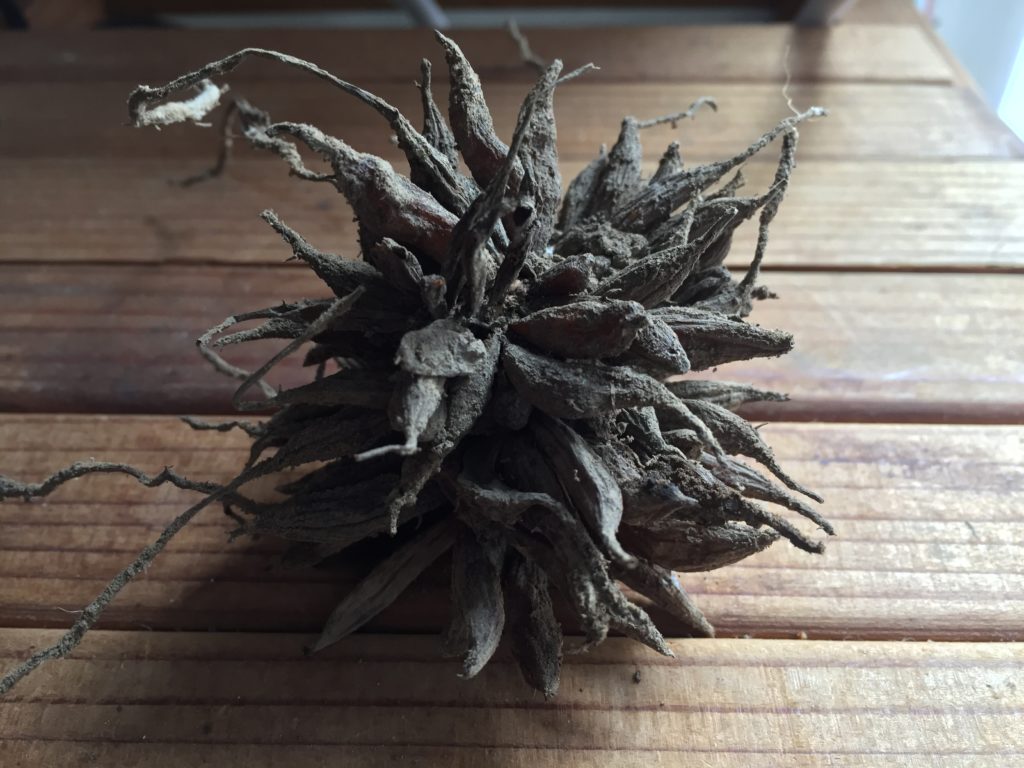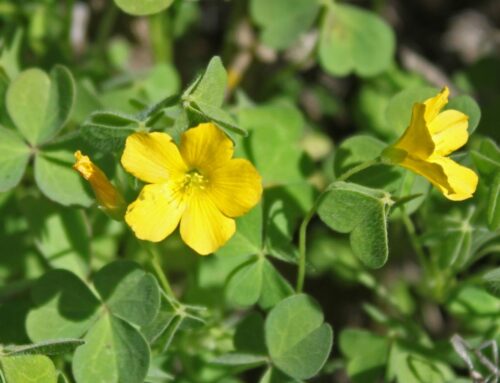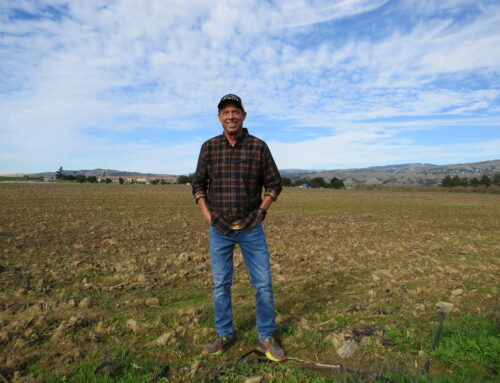After the first spring rain, little brown lumps suddenly sprout bizarre, gooey orange arms that seem to appear overnight.

Photo courtesy Kate Russell
Cedar apple rust has made its way to South Valley and can damage your trees.
By Kate Russell

Kate Russell
Cedar apple rust is a fungal disease commonly found in the eastern U.S., but it has made its way to South Valley. Gilroy gardeners can protect their trees if they know what it looks like and how to treat it.
Cedar apple rust is caused by a fungus (Gymnosporangium juniperi-virginianae) that needs both apple and cedar trees to complete its life cycle. Crabapples, junipers, hawthorn, and quince can also be carriers.
This strange fungus uses four different types of spore-producing structures to complete its life cycle, but you won’t see any sign of disease for most of the year, unless you look closely.
It all starts with reddish-brown galls, less than 1-inch in diameter, found on infected juniper and cedar trees.
After the first spring rain, these little brown lumps suddenly sprout bizarre, gooey orange arms that seem to appear overnight.
These appendages are called telial horns and they quickly germinate, producing structures that make spores that are released into every breeze that passes by. These spores can travel up to two miles before landing on apple leaves, twigs, and blossoms.
Once these wind-blown spores take hold and germinate, they enter nearby plant tissue, where they create another structure which produces a different type of spore. These spores are, in turn, released in a sticky liquid that attracts insects.
 Insects then carry these spores around, resulting in fertilization. These fertilized spores grow through their leaf hosts and produce yet another spore-producing structure on the underside of the leaves. These spores are then blown back onto the cedar trees, where they will germinate and create galls that will produce next year’s telial horns.
Insects then carry these spores around, resulting in fertilization. These fertilized spores grow through their leaf hosts and produce yet another spore-producing structure on the underside of the leaves. These spores are then blown back onto the cedar trees, where they will germinate and create galls that will produce next year’s telial horns.
If you have cedar or juniper trees near your apple trees, regularly monitoring for symptoms is a good idea.
In commercial apple groves, cedar trees within a one mile radius are generally removed, as a preventative measure. Apple trees may show symptoms on leaves, young twigs, and fruit.
 In spring, small, yellow spots may appear, getting larger and turning bright red or orange as the disease intensifies. Concentric rings may be visible within these spots. You may also see orange droplets. As the disease progresses, black dots may become visible. By late summer, strange, tube-like or spiky structures appear on the underside of apple leaves. Similar lesions may be visible near the blossom end of fruit.
In spring, small, yellow spots may appear, getting larger and turning bright red or orange as the disease intensifies. Concentric rings may be visible within these spots. You may also see orange droplets. As the disease progresses, black dots may become visible. By late summer, strange, tube-like or spiky structures appear on the underside of apple leaves. Similar lesions may be visible near the blossom end of fruit.
Fungicides are effective against cedar apple rust. Apple trees are sprayed four times, at seven- to 10-day intervals, just as buds start to open, as a prevention. Infected trees must be treated with systemic fungicides. Cedar trees are generally sprayed in summer.




